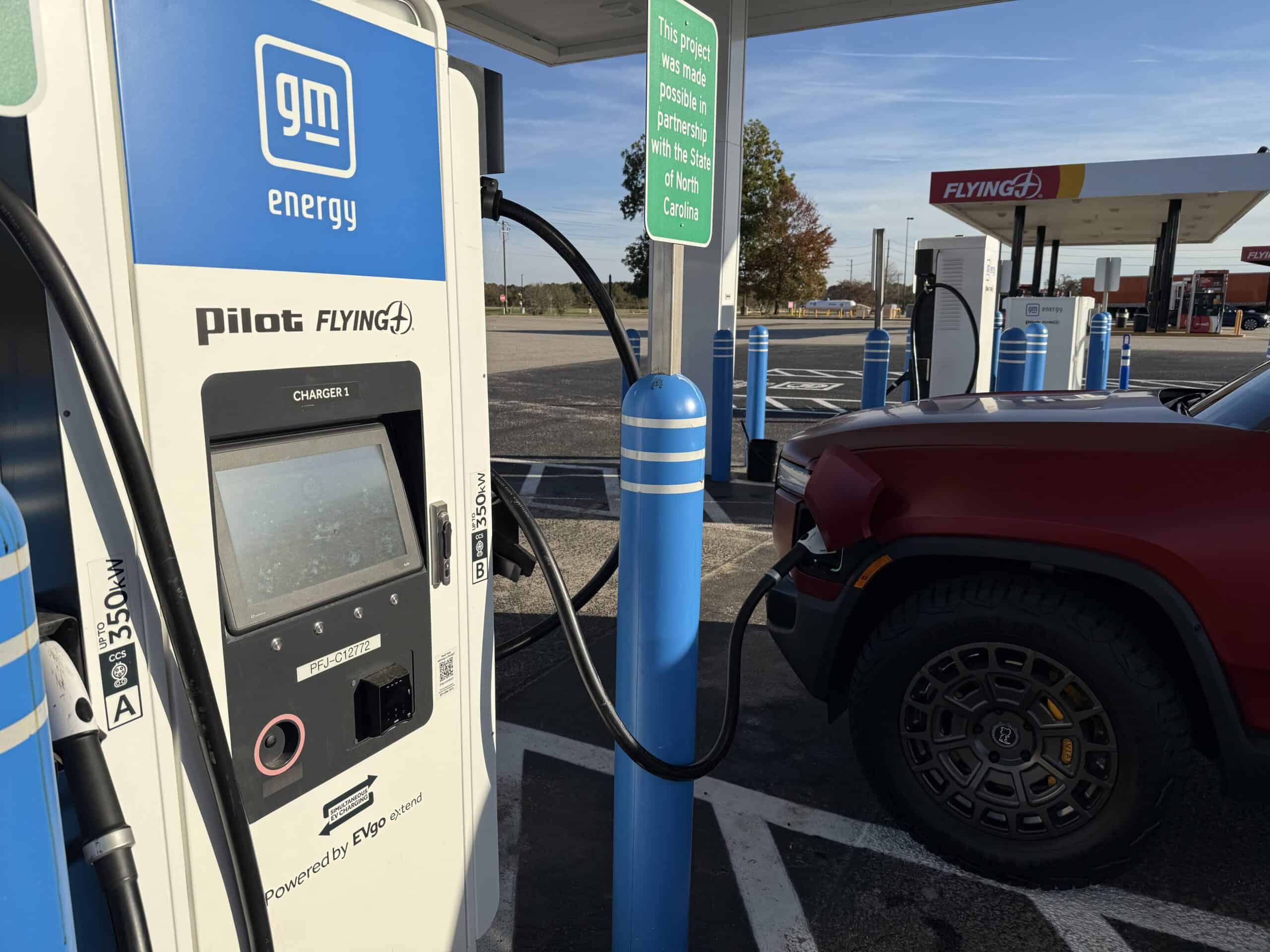Ordering a Rivian? Use code JOSE1715716 to earn 500 points on your purchase.
The Reality of Stopping to Charge Your EV Versus Filling Up an ICE

Switching from an internal combustion engine to an electric vehicle introduces some major lifestyle changes, especially in fueling. While gas stations are almost everywhere, charging an EV requires different planning, particularly on road trips. Let’s break down the benefits and challenges of stopping to charge an EV compared to refueling an ICE vehicle and look at how charging differs when you’re on the road versus at home.
The EV Charging Experience: Benefits and Challenges
Benefits
- Less Frequent Charging for Local Driving: For EV drivers who mostly travel locally, charging is nearly effortless. Plugging in at home overnight is often all that’s needed, which can save time otherwise spent at public chargers. This ease is a big advantage for daily commuters.
- Lower Cost and Energy Efficiency: EV charging is usually cheaper than gasoline, especially with off-peak electricity rates at home. Over time, the cost savings can add up significantly.
- Environmental Benefits: Charging an EV with renewable energy sources (like solar panels or clean-grid electricity) reduces the carbon footprint, as EVs have no tailpipe emissions. Each charge contributes to cleaner air compared to traditional gasoline vehicles.
- Opportunity for Breaks and Multi-Tasking: On long trips, EV drivers have a natural reminder to take breaks during charging stops. Many charging stations are located near places to eat, shop, or relax, allowing drivers to make good use of the charging time. Some newer charging locations even provide lounges and other amenities.
Challenges
- Longer Stops on the Road: While refueling an ICE car typically takes five minutes, EV charging stops can range from 15 minutes to over an hour, depending on the charger type and battery state. This difference requires adjusting expectations for anyone used to quick gas stops.
- Planning Required: Unlike ICE drivers, EV drivers must plan charging stops in advance, particularly for longer trips. Networks like Tesla Superchargers and Electrify America are growing, but the density of charging stations is still catching up to the convenience of gas stations. Charging availability may vary by area, which can impact trip flexibility.
- Charge Availability and Reliability: Public chargers are still in the process of becoming as reliable as gas stations. Occasionally, drivers may encounter out-of-order chargers, slower-than-expected speeds, or occupied stations. The experience can vary widely based on location and network provider.
Charging at Home Versus on the Road
One of the biggest shifts for EV owners heading out on a road trip is transitioning from easy at-home charging to relying on public chargers along the route. Here’s how the two experiences compare:
Charging at Home
For daily driving, home charging offers a seamless and affordable experience. Most EV owners plug in at the end of the day, waking up to a full or near-full battery each morning. With lower off-peak electricity rates or solar panels, home charging is also economical. There’s no planning or waiting involved—just a simple plug-in routine.
Charging on a Road Trip
On the road, charging requires a different approach. Unlike the simplicity of home charging, road-trip charging involves locating stations along the route and adjusting the driving pace to optimize each stop. While fast chargers can provide a 20-80% charge in about 30 minutes, many chargers can take longer based on their power output and the vehicle’s charging speed.
For road-trippers, this slower process compared to gas fill-ups can be a mixed experience. It provides a chance to stretch, eat, or explore nearby areas, but it also means that longer stops must be incorporated into travel plans. Route planners and apps help find stations and estimate charging times, but drivers should expect some variability. Factors like charger availability, maintenance, and even local demand can impact wait times, requiring a bit of flexibility.
Ultimately, while home charging makes EV ownership very convenient for day-to-day driving, road-trip charging requires a different mindset and planning. With the right preparation, though, it can become an enjoyable part of the journey.
The ICE Refueling Experience: Benefits and Drawbacks
Benefits
- Quick and Ubiquitous: Gas stations are everywhere, and a fill-up only takes a few minutes. For those who regularly drive long distances, this convenience is hard to beat.
- No Range Anxiety: ICE drivers don’t need to worry about the availability of fueling infrastructure, allowing for spontaneous trips without extensive planning.
- Dependability: Fueling an ICE car is consistent and reliable. Unlike charging networks that can face occasional downtime, gas stations are generally predictable, established, and widely accessible.
Drawbacks
- Higher Fuel Costs: While EV owners can save on charging costs, ICE drivers are subject to fluctuating gas prices. Over time, fuel costs add up, especially in areas with high gas prices.
- Environmental Impact: Gas and diesel vehicles produce emissions that contribute to air pollution and climate change. Each trip to the gas station comes with a larger carbon footprint, which EVs largely avoid.
- Increased Maintenance Needs: ICE engines have numerous moving parts that require regular maintenance. EVs bypass many of these needs, avoiding oil changes, emissions checks, and other combustion-related upkeep.
The Bottom Line
The choice between an EV and an ICE vehicle often comes down to lifestyle, convenience, and environmental values. For day-to-day driving, home charging makes EV ownership easy, affordable, and eco-friendly. On road trips, however, EVs require more planning for charging stops, while ICE vehicles still hold the advantage in terms of quick, convenient refueling.
As charging networks grow and fast-charging stations become more prevalent, the convenience gap will likely narrow. For now, EV owners can enjoy a quieter, cleaner, and cheaper driving experience but should be prepared for a bit of extra planning and patience when hitting the open road.
